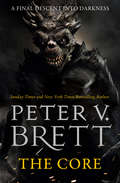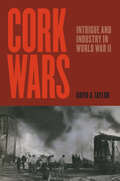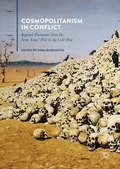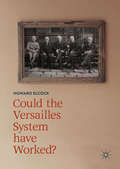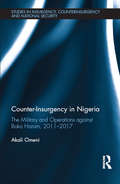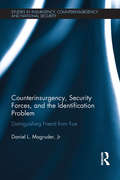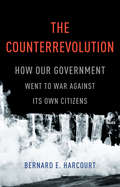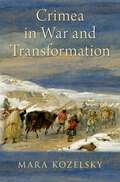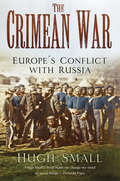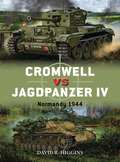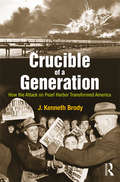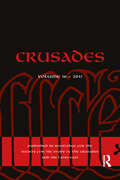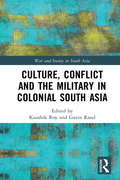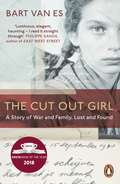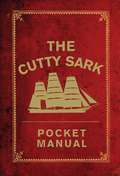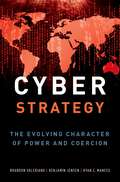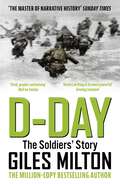- Table View
- List View
The Core (The Demon Cycle #5)
by Peter V. BrettSunday Times and New York Times bestselling author Peter V. Brett brings one of the most imaginative fantasy sagas of the twenty-first century to an epic close.
Cork Wars: Intrigue and Industry in World War II
by David A. TaylorIn 1940, with German U-boats blockading all commerce across the Atlantic Ocean, a fireball at the Crown Cork and Seal factory lit the sky over Baltimore. The newspapers said that you could see its glow as far north as Philadelphia and as far south as Annapolis. Rumors of Nazi sabotage led to an FBI investigation and pulled an entire industry into the machinery of national security as America stood on the brink of war. In Cork Wars, David A. Taylor traces this fascinating story through the lives of three men and their families, who were all drawn into this dangerous intersection of enterprise and espionage. At the heart of this tale is self-made mogul Charles McManus, son of Irish immigrants, who grew up on Baltimore;€™s rough streets. McManus ran Crown Cork and Seal, a company that manufactured everything from bottle caps to oil-tight gaskets for fighter planes. Frank DiCara, as a young teenager growing up in Highlandtown, watched from his bedroom window as the fire blazed at the factory. Just a few years later, under pressure to support his family after the death of his father, DiCara quit school and got a job at Crown. Meanwhile, Melchor Marsa, Catalan by birth, managed Crown Cork and Seal;€™s plants in Spain and Portugal;¢;‚¬;€?and was perfectly placed to be recruited as a spy. McManus, DiCara, and Marsa were connected by the unique properties of a seemingly innocuous substance. Cork, unrivaled as a sealant and insulator, was used in gaskets, bomber insulation, and ammunition, making it crucial to the war effort. From secret missions in North Africa to 4-H clubs growing seedlings in America to secret intelligence agents working undercover in the industry, this book examines cork;€™s surprising wartime significance. Drawing on in-depth interviews with surviving family members, personal collections, and recently declassified government records, Taylor weaves this by turns beautiful, dark, and outrageous narrative with the drama of a thriller. From the factory floor to the corner office, Cork Wars reflects shifts in our ideas of modernity, the environment, and the materials and norms of American life. World War II buffs;¢;‚¬;€?and anyone interested in a good yarn;¢;‚¬;€?will be gripped by this bold and frightening tale of a forgotten episode of American history.
Cork Wars: Intrigue and Industry in World War II
by David A. TaylorIn 1940, with German U-boats blockading all commerce across the Atlantic Ocean, a fireball at the Crown Cork and Seal factory lit the sky over Baltimore. The newspapers said that you could see its glow as far north as Philadelphia and as far south as Annapolis. Rumors of Nazi sabotage led to an FBI investigation and pulled an entire industry into the machinery of national security as America stood on the brink of war. In Cork Wars, David A. Taylor traces this fascinating story through the lives of three men and their families, who were all drawn into this dangerous intersection of enterprise and espionage. At the heart of this tale is self-made mogul Charles McManus, son of Irish immigrants, who grew up on Baltimore;€™s rough streets. McManus ran Crown Cork and Seal, a company that manufactured everything from bottle caps to oil-tight gaskets for fighter planes. Frank DiCara, as a young teenager growing up in Highlandtown, watched from his bedroom window as the fire blazed at the factory. Just a few years later, under pressure to support his family after the death of his father, DiCara quit school and got a job at Crown. Meanwhile, Melchor Marsa, Catalan by birth, managed Crown Cork and Seal;€™s plants in Spain and Portugal;¢;‚¬;€?and was perfectly placed to be recruited as a spy. McManus, DiCara, and Marsa were connected by the unique properties of a seemingly innocuous substance. Cork, unrivaled as a sealant and insulator, was used in gaskets, bomber insulation, and ammunition, making it crucial to the war effort. From secret missions in North Africa to 4-H clubs growing seedlings in America to secret intelligence agents working undercover in the industry, this book examines cork;€™s surprising wartime significance. Drawing on in-depth interviews with surviving family members, personal collections, and recently declassified government records, Taylor weaves this by turns beautiful, dark, and outrageous narrative with the drama of a thriller. From the factory floor to the corner office, Cork Wars reflects shifts in our ideas of modernity, the environment, and the materials and norms of American life. World War II buffs;¢;‚¬;€?and anyone interested in a good yarn;¢;‚¬;€?will be gripped by this bold and frightening tale of a forgotten episode of American history.
Cosmopolitanism in Conflict: Imperial Encounters from the Seven Years' War to the Cold War
by Dina GusejnovaThis book is the first study to engage with the relationship between cosmopolitan political thought and the history of global conflicts. Accompanied by visual material ranging from critical battle painting to the photographic representation of ruins, it showcases established as well as emerging interdisciplinary scholarship in global political thought and cultural history. Touching on the progressive globalization of conflicts between the eighteenth and the twentieth century, including the War of the Spanish Succession, the Seven Years’ War, the Napoleonic wars, the two World Wars, as well as seemingly ‘internal’ civil wars in eastern Europe’s imperial frontiers, it shows how these conflicts produced new zones of cultural contact. The authors build on a rich foundation of unpublished sources drawn from public institutions as well as private archives, allowing them to shed new light on the British, Russian, German, Ottoman, American, and transnational history of international thought and political engagement.
Could the Versailles System have Worked?
by Howard ElcockThis book explores the significance of the post-First World War peace settlement negotiated at Versailles in 1919. Versailles has always been a controversial subject and it has long been contended that the Treaty imposed unnecessarily severe conditions upon the defeated nations, particularly Germany, and in large part can be held responsible for the outbreak of war in 1939. This book considers the critical question as to whether the Treaty of Versailles established a new international settlement that could produce a peaceful and prosperous Europe, something that many have alleged was impossible. In an exhaustive analysis of the events that followed the Paris Peace Conference, Howard Elcock argues that the Versailles Treaty created a more stable diplomatic framework than has commonly been recognised, and challenges the traditional understanding that the delegates at Versailles can be held responsible for the failure to secure long-term peace in Europe.
Could the Versailles System have Worked?
by Howard ElcockThis book explores the significance of the post-First World War peace settlement negotiated at Versailles in 1919. Versailles has always been a controversial subject and it has long been contended that the Treaty imposed unnecessarily severe conditions upon the defeated nations, particularly Germany, and in large part can be held responsible for the outbreak of war in 1939. This book considers the critical question as to whether the Treaty of Versailles established a new international settlement that could produce a peaceful and prosperous Europe, something that many have alleged was impossible. In an exhaustive analysis of the events that followed the Paris Peace Conference, Howard Elcock argues that the Versailles Treaty created a more stable diplomatic framework than has commonly been recognised, and challenges the traditional understanding that the delegates at Versailles can be held responsible for the failure to secure long-term peace in Europe.
Counter-Insurgency in Nigeria: The Military and Operations against Boko Haram, 2011-2017 (Studies in Insurgency, Counterinsurgency and National Security)
by Akali OmeniThis book offers a detailed examination of the counter-insurgency operations undertaken by the Nigerian military against Boko Haram between 2011 and 2017. Based on extensive fieldwork conducted with military units in Nigeria, Counter-Insurgency in Nigeria has two main aims. First, it seeks to provide an understanding of the Nigerian military’s internal role – a role that today, as a result of internal threats, pivots towards counter-insurgency. The book illustrates how organizational culture, historical experience, institutions, and doctrine, are critical to understanding the Nigerian military and its attitudes and actions against the threat of civil disobedience, today and in the past. The second aim of the book is to examine the Nigerian military campaign against Boko Haram insurgents – specifically, plans and operations between June 2011 and April 2017. Within this second theme, emphasis is placed on the idea of battlefield innovation and the reorganization within the Nigerian military since 2013, as the Nigerian Army and Air Force recalibrated themselves for COIN warfare. A certain mystique has surrounded the technicalities of COIN operations by the Army against Boko Haram, and this book aims to disperse that veil of secrecy. Furthermore, the work’s analysis of the air force’s role in counter-insurgency is unprecedented within the literature on military warfare in Nigeria. This book will be of great interest to students of military studies, counter-insurgency, counter-terrorism, African politics and security studies in general.
Counter-Insurgency in Nigeria: The Military and Operations against Boko Haram, 2011-2017 (Studies in Insurgency, Counterinsurgency and National Security)
by Akali OmeniThis book offers a detailed examination of the counter-insurgency operations undertaken by the Nigerian military against Boko Haram between 2011 and 2017. Based on extensive fieldwork conducted with military units in Nigeria, Counter-Insurgency in Nigeria has two main aims. First, it seeks to provide an understanding of the Nigerian military’s internal role – a role that today, as a result of internal threats, pivots towards counter-insurgency. The book illustrates how organizational culture, historical experience, institutions, and doctrine, are critical to understanding the Nigerian military and its attitudes and actions against the threat of civil disobedience, today and in the past. The second aim of the book is to examine the Nigerian military campaign against Boko Haram insurgents – specifically, plans and operations between June 2011 and April 2017. Within this second theme, emphasis is placed on the idea of battlefield innovation and the reorganization within the Nigerian military since 2013, as the Nigerian Army and Air Force recalibrated themselves for COIN warfare. A certain mystique has surrounded the technicalities of COIN operations by the Army against Boko Haram, and this book aims to disperse that veil of secrecy. Furthermore, the work’s analysis of the air force’s role in counter-insurgency is unprecedented within the literature on military warfare in Nigeria. This book will be of great interest to students of military studies, counter-insurgency, counter-terrorism, African politics and security studies in general.
Counterinsurgency, Security Forces, and the Identification Problem: Distinguishing Friend From Foe (Studies in Insurgency, Counterinsurgency and National Security)
by Daniel L. Magruder, JrThis book presents a theory and empirical evidence for how security forces can identify militant suspects during counterinsurgency operations. A major oversight on the part of academics and practitioners has been to ignore the critical antecedent issue common to persuasion and coercion counterinsurgency (COIN) approaches: distinguishing friend from foe. This book proposes that the behaviour of security forces influences the likelihood of militant identification during a COIN campaign, and argues that security forces must respect civilian safety in order to create a credible commitment to facilitate collaboration with a population. This distinction is important as conventional wisdom has wrongly assumed that the presence of security forces confers control over terrain or influence over a population. Collaboration between civilian and government actors is the key observable indicator of support in COIN. Paradoxically, this theory accounts for why and how increased risk to government forces in the short term actually improves civilian security in the long run. Counterinsurgency, Security Forces, and the Identification Problem draws on three case studies: the Huk Rebellion in the Philippines post-World War II; Marines Corps’ experiences in Vietnam through the Combined Action Program; and Special Operations activities in Iraq after 2003. For military practitioners, the work illustrates the critical precursor to establishing "security" during counterinsurgency operations. The book also examines the role and limits of modern technology in solving the identification problem. This book will be of interest to students of counterinsurgency, military history, strategic studies, US foreign policy, and security studies in general.
Counterinsurgency, Security Forces, and the Identification Problem: Distinguishing Friend From Foe (Studies in Insurgency, Counterinsurgency and National Security)
by Daniel L. Magruder, JrThis book presents a theory and empirical evidence for how security forces can identify militant suspects during counterinsurgency operations. A major oversight on the part of academics and practitioners has been to ignore the critical antecedent issue common to persuasion and coercion counterinsurgency (COIN) approaches: distinguishing friend from foe. This book proposes that the behaviour of security forces influences the likelihood of militant identification during a COIN campaign, and argues that security forces must respect civilian safety in order to create a credible commitment to facilitate collaboration with a population. This distinction is important as conventional wisdom has wrongly assumed that the presence of security forces confers control over terrain or influence over a population. Collaboration between civilian and government actors is the key observable indicator of support in COIN. Paradoxically, this theory accounts for why and how increased risk to government forces in the short term actually improves civilian security in the long run. Counterinsurgency, Security Forces, and the Identification Problem draws on three case studies: the Huk Rebellion in the Philippines post-World War II; Marines Corps’ experiences in Vietnam through the Combined Action Program; and Special Operations activities in Iraq after 2003. For military practitioners, the work illustrates the critical precursor to establishing "security" during counterinsurgency operations. The book also examines the role and limits of modern technology in solving the identification problem. This book will be of interest to students of counterinsurgency, military history, strategic studies, US foreign policy, and security studies in general.
The Counterrevolution: How Our Government Went To War Against Its Own Citizens
by Bernard E. HarcourtMilitarized police officers with tanks and drones. Pervasive government surveillance and profiling. Social media that distract and track us. All of these, contends Bernard E. Harcourt, are facets of a new and radical governing paradigm in the United States -- one rooted in the modes of warfare originally developed to suppress anticolonial revolutions and, more recently, to prosecute the war on terror. The Counterrevolution is a penetrating and disturbing account of the rise of counterinsurgency, first as a military strategy but increasingly as a way of ruling ordinary Americans. Harcourt shows how counterinsurgency's principles -- bulk intelligence collection, ruthless targeting of minorities, pacifying propaganda -- have taken hold domestically despite the absence of any radical uprising. This counterrevolution against phantom enemies, he argues, is the tyranny of our age. Seeing it clearly is the first step to resisting it effectively.
Crimea in War and Transformation
by Mara KozelskyCrimea in War and Transformation is the first book to examine the terrible toll of violence on Crimean civilians and landscapes from mobilization through reconstruction. When war landed on Crimea's coast in September 1854, multiple armies instantly doubled the peninsula's population. Engineering brigades mowed down forests to build barracks. Ravenous men fell upon orchards like locusts and slaughtered Crimean livestock. Within a month, war had plunged the peninsula into a subsistence crisis. Soldiers and civilians starved as they waited for food to travel from the mainland by oxcart at a rate of ½ mile per hour. Every army conscripted Tatars as laborers, and fired upon civilian homes. Several cities and villages-Sevastopol, Kerch, Balaklava, Genichesk among them-burned to the ground. At the height of violence, hysterical officers accused Tatars of betrayal and deported large segments of the local population. Peace did not bring relief to Crimea's homeless and hungry. Removal of dead bodies and human waste took months. Epidemics swept away young children and the elderly. Russian officials estimated the devastation wrought by Crimean War exceeded that of Napoleon's invasion. Recovery packages failed human need, and by 1859, the trickle of Tatar out-migration that had begun during the war turned into a flood. Nearly 200,000 Tatars left Crimea by 1864, adding a demographic crisis to the tally of war's destruction. Drawing from a wide body of published and unpublished material, including untapped archives, testimonies, and secret police files from Russia, Ukraine and Crimea, Mara Kozelsky details in readable and vivid prose the toll of war on the Crimean people, and the Russian Empire as a whole, from mobilization through failed efforts at reconstruction.
The Crimean War: Europe's Conflict with Russia
by Hugh SmallIn the winter of 1854, Britain and France, with Europe-wide support, invaded Russia and besieged the fortress of Sebastopol in the Crimea. Their object was to curtail Russian expansion. It was the most destructive conflict of the century, with total fatalities comparable to those of the American Civil War. Hugh Small, whose biography of Florence Nightingale first exposed the truth about her wartime hospital, now shows how the history of the Crimean War was manipulated to conceal Britain and Europe’s failure. Only since the collapse of the Soviet Union has it become clear how much had been at stake in the Crimea. The failure of Britain’s politicians to control their generals led to the collapse of the peacekeeping arrangements of the ‘Concert of Europe’ – a sort of early UN Security Council. Russian expansion continued unchecked, leading to the divisions seen today in Ukraine. Small is equally revealing about the battles. His carefully-researched account of the famous Charge of the Light Brigade overturns the modern conclusion that it was a blunder by senior officers. It was the ordinary cavalrymen who insisted on it – as the Commander-in-Chief admitted in parliament at the time.
Cromwell vs Jagdpanzer IV: Normandy 1944 (Duel #86)
by Johnny Shumate David R. Higgins Alan GillilandBy 1944, the evolution of armoured doctrine had produced very different outcomes in Britain and Germany. Offering a good balance of speed, protection and firepower, the British Cromwell tank was much faster than its German opponent, but the Jagdpanzer IV tank destroyer had a high-velocity main gun and a lower profile that made it formidable on the defensive, especially in ambush situations. The two types would fight in a series of bloody encounters, from the initial days of the struggle for Normandy through to its climax as the Allies sought to trap their opponents in the Falaise Pocket. Using archive photographs, specially commissioned artwork and battle reports, this fascinating study expertly assesses the realities of tactical armoured combat during the desperate battles after D-Day.
Crucible of a Generation: How the Attack on Pearl Harbor Transformed America
by J. Kenneth BrodyCrucible of a Generation tells the story of the fifteen days surrounding the Japanese attack on Pearl Harbor through the pages of eight leading American newspapers. Focusing on publications such as The New York Times and the Chicago Tribune, J. Kenneth Brody paints a vivid picture of U.S. political culture and society at a pivotal moment in the nation's history. Brody considers the papers in full, from headlines to "help wanted" ads, in a text richly illustrated with archival images, wartime posters, and editorial cartoons. The book provides a compelling snapshot of the United States and the role of the media at a time of dramatic tension and global change.
Crucible of a Generation: How the Attack on Pearl Harbor Transformed America
by J. Kenneth BrodyCrucible of a Generation tells the story of the fifteen days surrounding the Japanese attack on Pearl Harbor through the pages of eight leading American newspapers. Focusing on publications such as The New York Times and the Chicago Tribune, J. Kenneth Brody paints a vivid picture of U.S. political culture and society at a pivotal moment in the nation's history. Brody considers the papers in full, from headlines to "help wanted" ads, in a text richly illustrated with archival images, wartime posters, and editorial cartoons. The book provides a compelling snapshot of the United States and the role of the media at a time of dramatic tension and global change.
Crusades: Volume 16 (Crusades)
by Jonathan Phillips Benjamin Z. Kedar Nikolaos G. ChrissisCrusades covers seven hundred years from the First Crusade (1095-1102) to the fall of Malta (1798) and draws together scholars working on theatres of war, their home fronts and settlements from the Baltic to Africa and from Spain to the Near East and on theology, law, literature, art, numismatics and economic, social, political and military history. Routledge publishes this journal for The Society for the Study of the Crusades and the Latin East. Particular attention is given to the publication of historical sources in all relevant languages - narrative, homiletic and documentary - in trustworthy editions, but studies and interpretative essays are welcomed too. Crusades also incorporates the Society's Bulletin.
Crusades: Volume 16 (Crusades)
by Jonathan Phillips Nikolaos G. Chrissis Edited by Benjamin Z. KedarCrusades covers seven hundred years from the First Crusade (1095-1102) to the fall of Malta (1798) and draws together scholars working on theatres of war, their home fronts and settlements from the Baltic to Africa and from Spain to the Near East and on theology, law, literature, art, numismatics and economic, social, political and military history. Routledge publishes this journal for The Society for the Study of the Crusades and the Latin East. Particular attention is given to the publication of historical sources in all relevant languages - narrative, homiletic and documentary - in trustworthy editions, but studies and interpretative essays are welcomed too. Crusades also incorporates the Society's Bulletin.
A Culinary Campaign (The World At War)
by Alexis SoyerSoyer's brilliant memoir, a vivid account of the Crimean War and of Soyer's inventions and recipes for feeding armies in the field. He was as important in the Crimea as Florence Nightingale, for his influence on the reform of army feeding enabled wounded soldiers to survive. A modified version of the Soyer stove was still in use in the Gulf War. (Goodreads)
Culture, Conflict and the Military in Colonial South Asia (War and Society in South Asia)
by Kaushik Roy Gavin RandThis book offers diverse and original perspectives on South Asia’s imperial military history. Unlike prevailing studies, the chapters in the volume emphasize both the vital role of culture in framing imperial military practice and the multiple cultural effects of colonial military service and engagements. The volume spans from the early East India Company period through to the Second World War and India’s independence, exploring themes such as the military in the field and at leisure, as well as examining the effects of imperial deployments in South Asia and across the British Empire. Drawing extensively on new archival research, the book integrates previously disparate accounts of imperial military history and raises new questions about culture and operational practice in the colonial Indian Army. This work will be of interest to scholars and researchers of modern South Asian history, war and strategic studies, military history, the British Empire, as well as politics and international relations.
Culture, Conflict and the Military in Colonial South Asia (War and Society in South Asia)
by Kaushik Roy Gavin RandThis book offers diverse and original perspectives on South Asia’s imperial military history. Unlike prevailing studies, the chapters in the volume emphasize both the vital role of culture in framing imperial military practice and the multiple cultural effects of colonial military service and engagements. The volume spans from the early East India Company period through to the Second World War and India’s independence, exploring themes such as the military in the field and at leisure, as well as examining the effects of imperial deployments in South Asia and across the British Empire. Drawing extensively on new archival research, the book integrates previously disparate accounts of imperial military history and raises new questions about culture and operational practice in the colonial Indian Army. This work will be of interest to scholars and researchers of modern South Asian history, war and strategic studies, military history, the British Empire, as well as politics and international relations.
The Cut Out Girl: A Story of War and Family, Lost and Found
by Bart Van Es'Luminous, elegant, haunting, - I read it straight through' Philippe Sands, Author of East West StreetThe enthralling story of a man's search for the truth about his family's pastThe last time Lien saw her parents was in the Hague when she was collected at the door by a stranger and taken to a city far away to be hidden from the Nazis. She was raised by her foster family as one of their own, but a falling out well after the war meant they were no longer in touch. What was her side of the story, Bart van Es - a grandson of the couple who looked after Lien - wondered? What really happened during the war, and after?So began an investigation that would consume and transform both Bart van Es's life and Lien's. Lien was now in her 80s and living in Amsterdam. Reluctantly, she agreed to meet him, and eventually they struck up a remarkable friendship. The Cut Out Girl braids together a powerful recreation of Lien's intensely harrowing childhood story with the present-day account of Bart's efforts to piece that story together. And it embraces the wider picture, too, for Holland was more cooperative in rounding up its Jews for the Nazis than any other Western European country; that is part of Lien's story too.This is an astonishing, moving reckoning with a young girl's struggle for survival during war. It is a story about the powerful love and challenges of foster families, and about the ways our most painful experiences - so crucial in defining us - can also be redefined.'Remarkable, deeply moving' Penelope Lively'An awe-inspiring account of the tragedies and triumphs within the world of the Holocaust's "hide-away" children, and of the families who sheltered them' Georgia Hunter'A complex and uplifting tale' Kirkus
The Cutty Sark Pocket Manual
by National Maritime Museum Arron Hewett Louise MacfarlaneConstructed on the Clyde in 1869 for the Jock Willis Shipping Line, Cutty Sark was one of the last tea clippers to be built and one of the fastest. Cutty Sark spent just a few years on the tea routes before the opening of the Suez Canal and the increasing use of steamships made clippers unprofitable on shorter routes. It was turned to the trade in wool from Australia, where for ten years she held the record time for a journey to Britain. After finishing her time in service as cargo ship, and then a training and cadet ship, it was transferred to permanent dry dock at Greenwich, London, for public display. This handy and illuminating pocket manual collates original documents to tell the fascinating story of how the legendary Cutty Sark was commissioned, her design and building, life on board and her notable journeys.
CYBER STRATEGY C: The Evolving Character of Power and Coercion
by Benjamin Jensen Brandon Valeriano Ryan C. ManessSome pundits claim cyber weaponry is the most important military innovation in decades, a transformative new technology that promises a paralyzing first-strike advantage difficult for opponents to deter. Yet, what is cyber strategy? How do actors use cyber capabilities to achieve a position of advantage against rival states? This book examines the emerging art of cyber strategy and its integration as part of a larger approach to coercion by states in the international system between 2000 and 2014. To this end, the book establishes a theoretical framework in the coercion literature for evaluating the efficacy of cyber operations. Cyber coercion represents the use of manipulation, denial, and punishment strategies in the digital frontier to achieve some strategic end. As a contemporary form of covert action and political warfare, cyber operations rarely produce concessions and tend to achieve only limited, signaling objectives. When cyber operations do produce concessions between rival states, they tend to be part of a larger integrated coercive strategy that combines network intrusions with other traditional forms of statecraft such as military threats, economic sanctions, and diplomacy. The books finds that cyber operations rarely produce concessions in isolation. They are additive instruments that complement traditional statecraft and coercive diplomacy. The book combines an analysis of cyber exchanges between rival states and broader event data on political, military, and economic interactions with case studies on the leading cyber powers: Russia, China, and the United States. The authors investigate cyber strategies in their integrated and isolated contexts, demonstrating that they are useful for maximizing informational asymmetries and disruptions, and thus are important, but limited coercive tools. This empirical foundation allows the authors to explore how leading actors employ cyber strategy and the implications for international relations in the 21st century. While most military plans involving cyber attributes remain highly classified, the authors piece together strategies based on observations of attacks over time and through the policy discussion in unclassified space. The result will be the first broad evaluation of the efficacy of various strategic options in a digital world.
D-Day: The Soldiers' Story
by Giles Milton'Compellingly authentic, revelatory and beautifully written. A gripping tour de force' Damien LewisSeventy-five years have passed since D-Day, the day of the greatest seaborne invasion in history.The outcome of the Second World War hung in the balance on that chill June morning. If Allied forces succeeded in gaining a foothold in northern France, the road to victory would be open. But if the Allies could be driven back into the sea, the invasion would be stalled for years, perhaps forever.An epic battle that involved 156,000 men, 7,000 ships and 20,000 armoured vehicles, the desperate struggle that unfolded on 6 June 1944 was, above all, a story of individual heroics - of men who were driven to keep fighting until the German defences were smashed and the precarious beachheads secured. Their authentic human story - Allied, German, French - has never fully been told.Giles Milton's bold new history narrates the day's events through the tales of survivors from all sides: the teenage Allied conscript, the crack German defender, the French resistance fighter. From the military architects at Supreme Headquarters to the young schoolboy in the Wehrmacht's bunkers, D-Day: The Soldiers' Story lays bare the absolute terror of those trapped in the frontline of Operation Overlord. It also gives voice to those hitherto unheard - the French butcher's daughter, the Panzer Commander's wife, the chauffeur to the General Staff.This vast canvas of human bravado reveals 'the longest day' as never before - less as a masterpiece of strategic planning than a day on which thousands of scared young men found themselves staring death in the face. It is drawn in its entirety from the raw, unvarnished experiences of those who were there.
